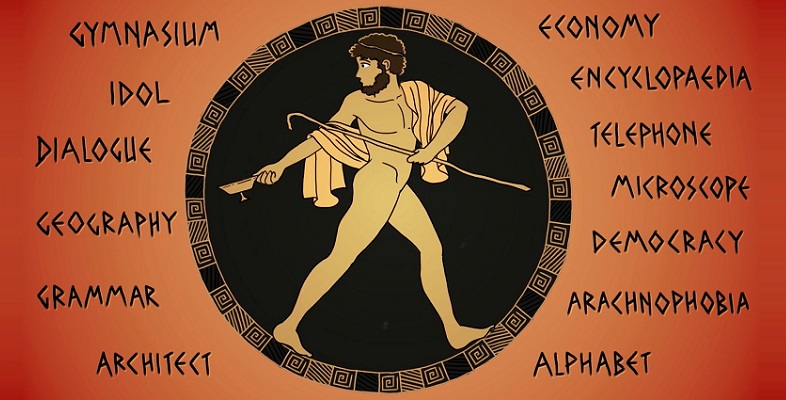9 Listening to Homer
Knowing the sounds of ancient Greek, in addition to helping you pronounce Greek words accurately, also helps you to appreciate the rhythms of Greek poetry. Greek verse, unlike English-language poetry, does not rely on stress patterns and rarely contains rhyme.
You will now listen to some examples.
Activity 7 Homeric rhythm
Listen again to the Homeric epithets from Activity 5. Can you detect a rhythmic pattern towards the end of each phrase?
γλαυκῶπις Ἀθήνη (‘bright-eyed Athena’)
κορυθαίολος Ἕκτωρ (‘Hector of the flashing helmet’)
λευκώλενος Ἥρη (‘white-armed Hera’)
ῥοδοδάκτυλος Ἠώς (‘rosy-fingered Dawn’)
πόδας ὠκὺς Ἀχιλλεύς (‘swift-footed Achilles’)
Discussion
Homeric epic follows the rules of Greek poetic metre, a flexible system for combining long and short syllables in standard patterns. You might have been able to detect a repeating rhythm to the last five syllables of each phrase, something like tum-ti-ti-tum-tum.
These epithets, which recur throughout the epics, are designed to fit into the end of a Homeric line, where the pattern is at its most regular. The underlying rhythm, called ‘dactylic hexameter’, would have formed one important dimension of a performance of Homeric poetry.
Now listen to some complete lines from the beginning of the Iliad and Odyssey. You are not expected to understand all the details, but perhaps you can pick out a few words, like ‘Achilles’ or ‘Troy’.
μῆνιν ἄειδε θεὰ Πηληϊάδεω Ἀχιλῆος
οὐλομένην, ἣ μυρί᾽ Ἀχαιοῖς ἄλγε᾽ ἔθηκε
Sing, goddess, of the anger of Achilles son of Peleus,
Destructive anger which brought countless miseries to the Achaeans
ἄνδρα μοι ἔννεπε, μοῦσα, πολύτροπον, ὃς μάλα πολλὰ
πλάγχθη, ἐπεὶ Τροίης ἱερὸν πτολίεθρον ἔπερσε’
Speak, muse, of the man of many a turn, who undertook a multitude of
wanderings, when he had sacked the sacred city of Troy
Look again at the translations of these two passages. Who, in each case, is being addressed?
Discussion
The poet seeks inspiration from the goddess (θεά) or muse (μοῦσα), before embarking upon his lengthy performance. (The Iliad is roughly 15,000 lines long, the Odyssey about 12,000).
The impression is of a poet acting as a medium through which divine words (ἔννεπε, ‘speak!’) and song (ἄειδε, ‘sing!’) can flow. The muse, in effect, underwrites the poem, allowing the poet to describe places and events he has not seen himself, including the actions and conversations of the gods on Mount Olympus.
To experience what a poetic performance might have sounded like, listen to this recreation of the opening of the Iliad, sung to the lyre.
Study note
You can learn more about the reconstruction of the Iliad, and the research behind it, in the course Introducing Homer’s Iliad [Tip: hold Ctrl and click a link to open it in a new tab. (Hide tip)] .
